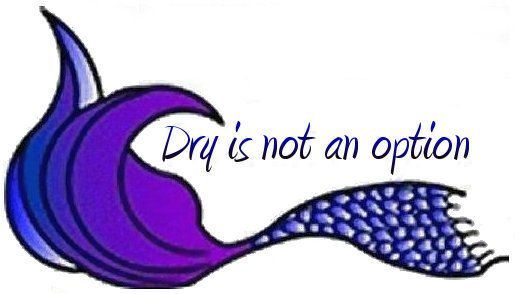I have been trained and it is my belief that every workout, whether in the pool or on ‘dry land’ should follow a basic outline and consist of different exercises that fulfill each part.
I also believe that it is better to do fewer repetitions and do them properly. As in most forms of exercise, body alignment, posture, form and execution are very important to get the most out of exercises and to prevent injury.
The difference water makes is in the variability buoyancy gives. You are not restricted by gravity and can work the body on many planes not feasible on ‘dry land’. You can go from shallow to the deep water which also changes the impact level.
That being said, here is what I consider to be an outline for a water workout. Exercises should be done in this order:
 |
| Side Strides |
Acclimation -- is a short beginning and is designed to get participants used to the water by using long slow movements; this warms up the muscles in preparation for exercise. I use this time to get the class to focus on where they are and what they are about to do.
 |
| Calf Stretch |
Stretching -- designed to ready the body for more strenuous work. Because most of the cardio involves the legs, beginning stretches concentrate on the legs.
 |
| Toe Reaches |
Warm-up -- this part can consist of some of the same moves as the aerobic portion but are done at a moderate pace.
 |
| Over the Barrel |
Aerobic/Cardio -- is done for a minimum of 15 minutes. It incorporates movements of the body in all planes (side to side, front to back, up and down) and all levels.
The levels are Neutral – participants roll on feet and there is no bounce; Rebound – feet actually leave the bottom of the pool a short distance, as in a jog or a hop and Suspended – where no feet touch the pool bottom (this is an advanced level when performed in shallow water).
 |
| Cross Country Ski |
Cool down – is a transitional phase designed to slow down the pace of exercising, which slows the heart rate, and allows you to move on to the next section.
 |
| Barbell Push |
Strength/toning -- may incorporate various types of crunches (for the abdominals) or working with the Styrofoam barbells for upper body strength.
 |
| C Stretch |
Stretching – always concludes the aquatic work out. Different types of stretches are done at the end of the session than the start. This is the time to stretch your arms, shoulders, and lower back. At the same time use slow side to side movements to relax leg muscles and it keeps you from getting cold.
You are going to find plenty of different schools of thought on which workout style is the most effective, but most of them agree on this format. Now all you have to do is decide which exercises to use for the different parts! Maybe we can talk about that next time.








I really like all the Aqua Fitness workouts, but The I'm keen on the Aqua Zumba. The music plus the high intensivity give me The best boost.
ReplyDelete